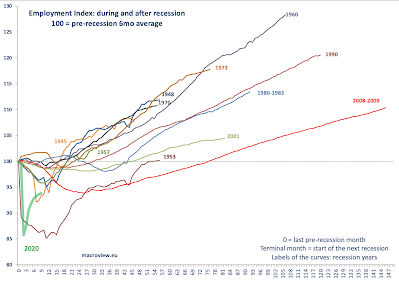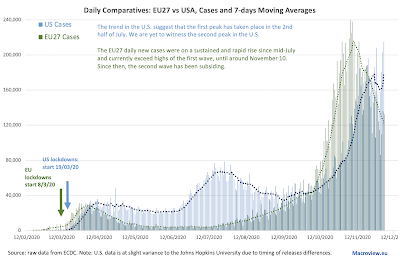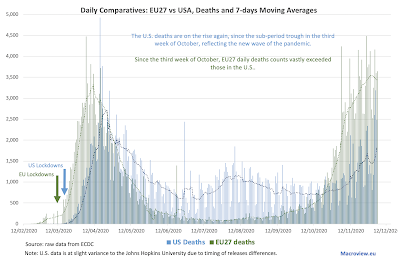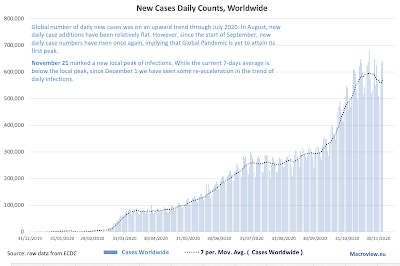In previous posts, I covered Covid-19 updates for the last week of 2020 for:
- Worldwide trends: https://trueeconomics.blogspot.com/2021/01/2121-covid19-update-worldwide-numbers.html;
- Europe and the EU27: https://trueeconomics.blogspot.com/2021/01/2121-covid19-update-europe.html; and
- Countries with more than 250,000 cases: https://trueeconomics.blogspot.com/2021/01/2121-covid19-update-countries-with-250k.html.
- Currently, BRIICS account for 28.2% of all cases of Covid-19 in the world, and 25.3% of all deaths. This compares to these countries accounting for 45.3% of the world population.
- The pandemic has been relatively benign for this group of countries. If BRIICS were ranked as a stand-alone country within the group of 40 countries with more than 250,000 cases, BRIICS would have ranked 38th worst in terms of cases per 1 million of population, 37th worst in terms of deaths per capita, and 28th in terms of deaths per case.
- BRIICS data, however is highly heterogeneous by country:
- Brazil ranks 11th worst-hit country in the world in terms of infections rate, death rate per capita and mortality rate;
- Russia ranks 28th;
- India ranks 38th;
- Indonesia 31st;
- China is unranked (officially, the country has fever than 250,000 cases, although overall robustness of the Chinese data is highly questionable); and
- South Africa ranks 22nd worst.
- No BRIICS country enters the league of 22 countries most-impacted by the pandemic (defined as countries with infection rate of 4% of population and higher).
Now, to dynamics and trends.
BRIICS weekly case numbers are on the sustained rise, once again, since the trough achieved in week 45 which marked the end of the Wave 1 and the start of Wave 2 of the pandemic:
Rather similar dynamics are taking place in deaths counts:











































